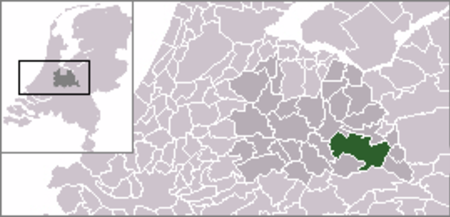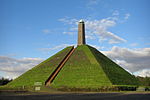Maarn
Former municipalities of Utrecht (province)Municipalities of the Netherlands disestablished in 2006Populated places in Utrecht (province)Utrecht (province) geography stubsUtrechtse Heuvelrug

Maarn is a town in the Dutch province of Utrecht. It is a part of the municipality of Utrechtse Heuvelrug, and is located about 10 km east of Zeist. In 2001, the town of Maarn had 4,071 inhabitants. The built-up area of the town was 1.26 km2, and contained 1,793 residences.Until 2006, Maarn was a separate municipality, covering both Maarn and Maarsbergen. Maarn is a small village in the heart of the Utrechtse Heuvelrug, a protected nature reserve in the Netherlands. The village has approximately 8,000 inhabitants, has a very small center and is probably best known for its tourism to the numerous camp-sites that surround the village.
Excerpt from the Wikipedia article Maarn (License: CC BY-SA 3.0, Authors, Images).Maarn
Het Steenbeek, Utrechtse Heuvelrug
Geographical coordinates (GPS) Address Nearby Places Show on map
Geographical coordinates (GPS)
| Latitude | Longitude |
|---|---|
| N 52.066666666667 ° | E 5.3666666666667 ° |
Address
De Koeheuvels
Het Steenbeek
3951 BM Utrechtse Heuvelrug
Utrecht, Netherlands
Open on Google Maps









